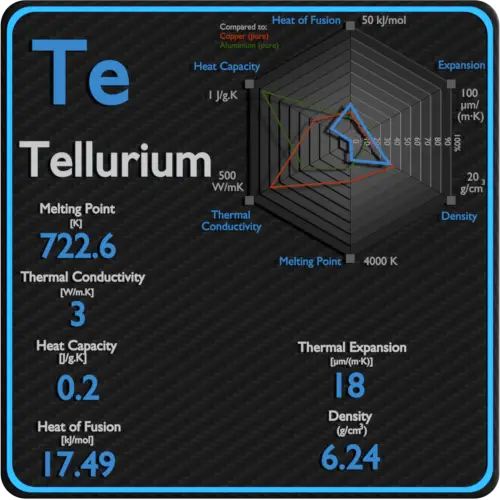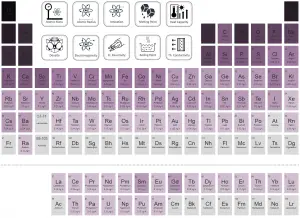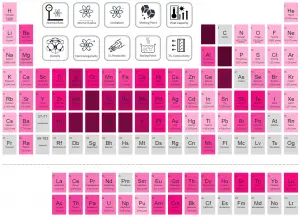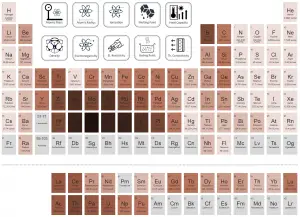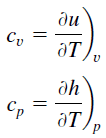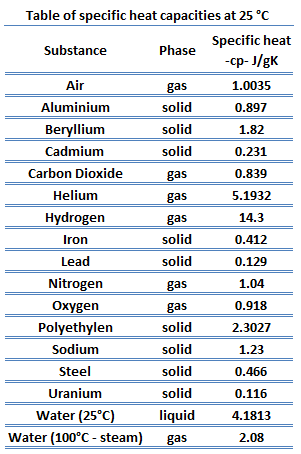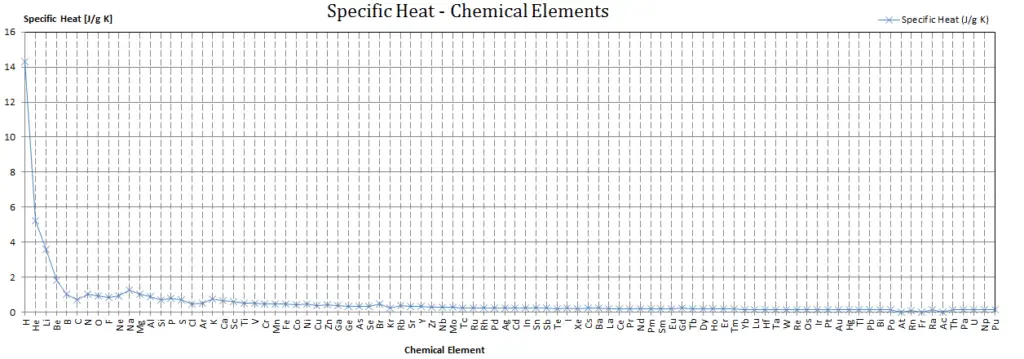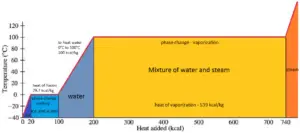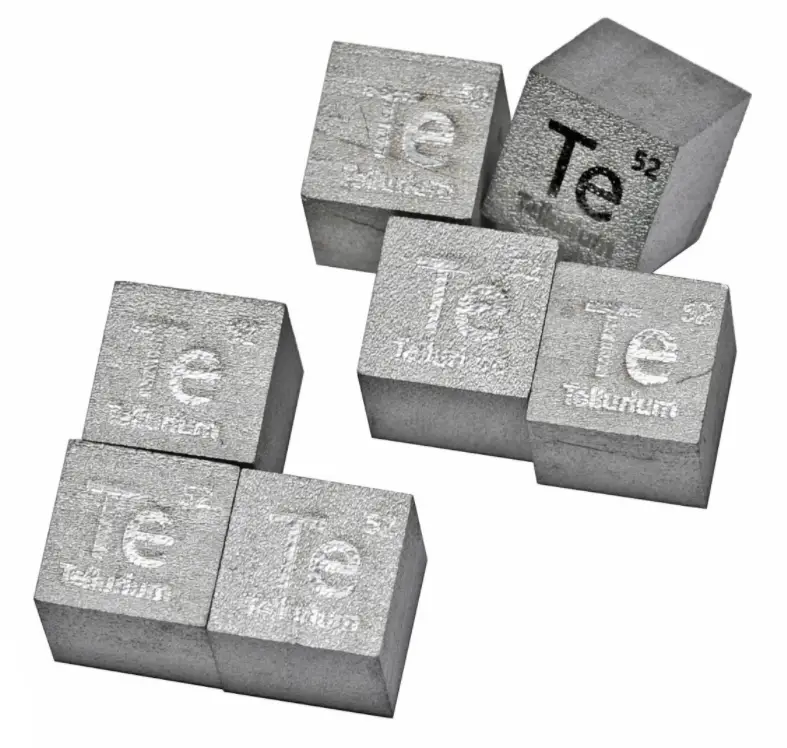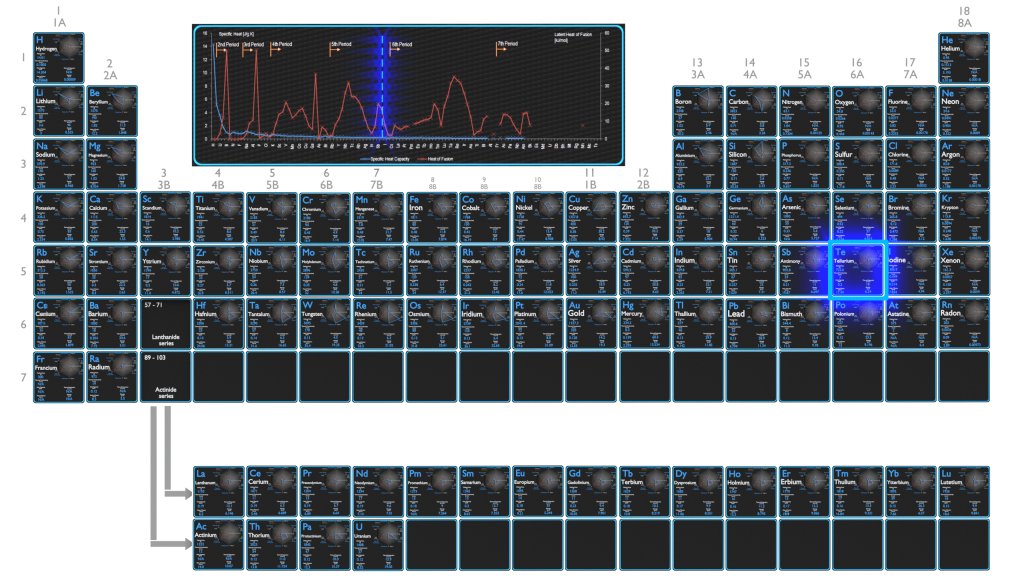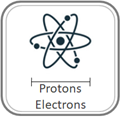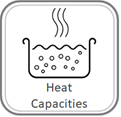About Tellurium
Tellurium is a brittle, mildly toxic, rare, silver-white metalloid. Tellurium is chemically related to selenium and sulfur. It is occasionally found in native form as elemental crystals. Tellurium is far more common in the universe as a whole than on Earth. Its extreme rarity in the Earth’s crust, comparable to that of platinum.
Tellurium – Specific Heat, Latent Heat of Fusion, Latent Heat of Vaporization
Specific heat of Tellurium is 0.2 J/g K.
Heat capacity is an extensive property of matter, meaning it is proportional to the size of the system. Heat capacity C has the unit of energy per degree or energy per kelvin. When expressing the same phenomenon as an intensive property, the heat capacity is divided by the amount of substance, mass, or volume, thus the quantity is independent of the size or extent of the sample.
Latent Heat of Fusion of Tellurium is 17.49 kJ/mol.
Latent Heat of Vaporization of Tellurium is 52.55 kJ/mol.
Latent heat is the amount of heat added to or removed from a substance to produce a change in phase. This energy breaks down the intermolecular attractive forces, and also must provide the energy necessary to expand the gas (the pΔV work). When latent heat is added, no temperature change occurs. The enthalpy of vaporization is a function of the pressure at which that transformation takes place.
See also: Mechanical Properties of Tellurium
Summary
| Element | Tellurium |
| Specific Heat | 0.2 J/g K |
| Heat of Fusion | 17.49 kJ/mol |
| Heat of Vaporization | 52.55 kJ/mol |
| Density | 6.24 g/cm3 |
Source: www.luciteria.com
